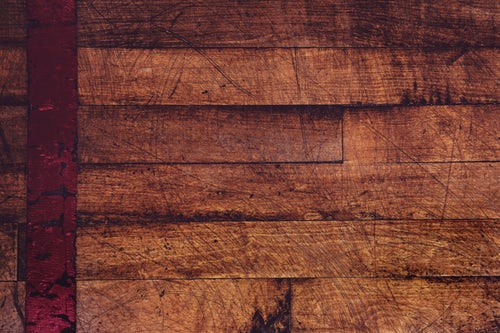We take great care to choose wall colors that can accompany the surrounding decor and purpose of a space, but there’s another important aspect that should be taken into account: the color of your hardwood floor. While carpets are still a popular feature, hardwood floors seem to be the dominant interior design trend of the moment. And there are a lot of colors to choose from. Your hardwood may be stained, painted, or left with its natural color, but whatever color it is will hold a surprisingly critical amount of influence over the wall color. Knowing what paint will look best can be a confusing task. Here are some tips on how to choose a wall color that best complements your hardwood flooring, brought to you by our expert interior painters.
Determine Whether Your Floor Has a Cool or Warm Undertone
The undertones of your floor have a significant influence on the paint used for the walls. Warm wood stains usually have a yellow/gold, red, or orange tinge, cooler floors will seem much more gray, blue, or taupe, and some stains may have touches of green or pink that can lean either warm or cool. These undertones will either be enhanced or played down by the color on the walls. You should also take the stain’s intensity into corresponding account. Dark floors can appear richer with warm undertones and ashier with cool undertones; the same goes for lighter floors.
Find a Color That Complements It
Once you’ve decided on the floor’s undertone (as well as its dominant color when viewed from afar), finding a color that complements it well will be a much simpler undertaking. Color theory plays a big part in this. Using the color wheel is an easy approach to finding a shade that will play nicely with your floor color. With the floor color and undertone as your springboard, you can experiment with analogous colors (colors next to each other on the wheel), complementary shades (colors across from each other), or triadic hues (three colors evenly spaced from each other), just to name a few. Just be sure to find a color that pairs nicely with your flooring. If you don’t care for using the color wheel for ideas, the next most straightforward way to find a suitable color is simply to pick a neutral shade. Browns, whites, creams, and greys are great options. Most neutrals go with just about everything, so they’re easy to match to the undertone of your floor without too much effort. You can also emphasize the darker or lighter color of your floor by contrasting it with a light or dark paint on your walls. Dark floors (whether they are richer or ashier toned) generally look best with lighter wall colors. Paired with dark walls, the room can feel too cozy or confined. The same concept goes for light floors: dark walls will provide a welcome contrast, and light walls could risk coming off overly sterile and visually bland.
What Look Do You Want the Room to Have?
Common guidelines are important to ensure you have a space that is visually pleasing and coherent, but the design of your room shouldn’t come down to “rules”. Let your personal taste have a hand in the process as well. Inspiration should come from the color schemes that catch your eye the most, not the ones that you feel forced to choose. For example, while it’s a common design tip that warm floors look best with warm walls–and likewise with cool colors–this isn’t an indisputable law. So if you have a floor with a warm undertone floor, a cooler wall color isn’t completely out of the question. You can discover many ways to mix warm and cool shades appropriately. In fact, it’s often encouraged: mixing the two can provide a great contrast, and keep the space from being overwhelmed one way or the other. Warm colors will enhance the room’s energy and give a more open effect. Cooler shades, on the other hand, have a tendency to mellow and close in the space for a more soothing enviorment. While you still need to keep in mind what colors will look the most appropriate or give an undesired effect, you shouldn’t feel confined to more traditional concepts. Play with what colors look best with your hardwood and what reflects your personality the best.
